В этом проекте показано, как реализовать простую программу Glassware, демонстрирующую основные функции API Google Mirror.
Чтобы увидеть полностью работающую демонстрацию проекта быстрого запуска, перейдите по адресу https://glass-python-starter-demo.appspot.com . В противном случае читайте дальше, чтобы узнать, как развернуть собственную версию.
Предварительные условия
App Engine SDK для Python . Проект быстрого запуска Python реализован с помощью App Engine. Для разработки и развертывания проекта вам понадобится Python App Engine SDK. Запустите установщик, если он подходит для вашей платформы, или распакуйте zip-файл в удобное место.
Создание экземпляра Google App Engine
Вам потребуется разместить проект быстрого запуска на экземпляре Google App Engine:
- Перейдите на http://appspot.com .
- Нажмите «Создать приложение» и создайте общедоступный экземпляр Google App Engine, размещенный на
appspot.com. - Дайте приложению идентификатор приложения и оставьте аутентификацию открытой для всех пользователей учетных записей Google . Идентификатор приложения понадобится вам позже, чтобы настроить проект быстрого запуска.
Создание проекта консоли API Google
Далее включите доступ к API Google Mirror:
- Перейдите в консоль Google API и создайте новый проект API.
- Нажмите «Службы» и включите API Google Mirror для вашего нового проекта.
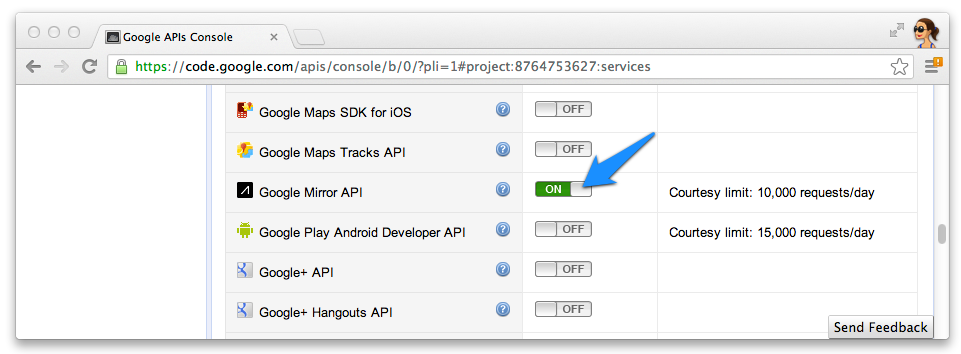
- Нажмите «Доступ к API» и создайте идентификатор клиента OAuth 2.0 для веб-приложения.
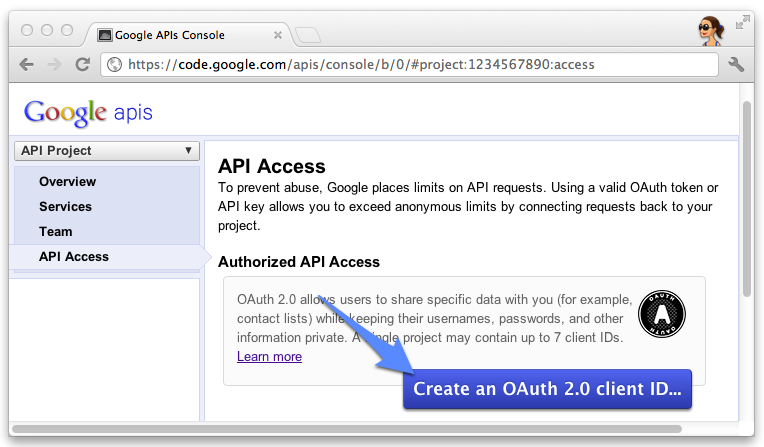
- Укажите название продукта и значок для вашей посуды. Эти поля отображаются на экране предоставления OAuth, представленном вашим пользователям.
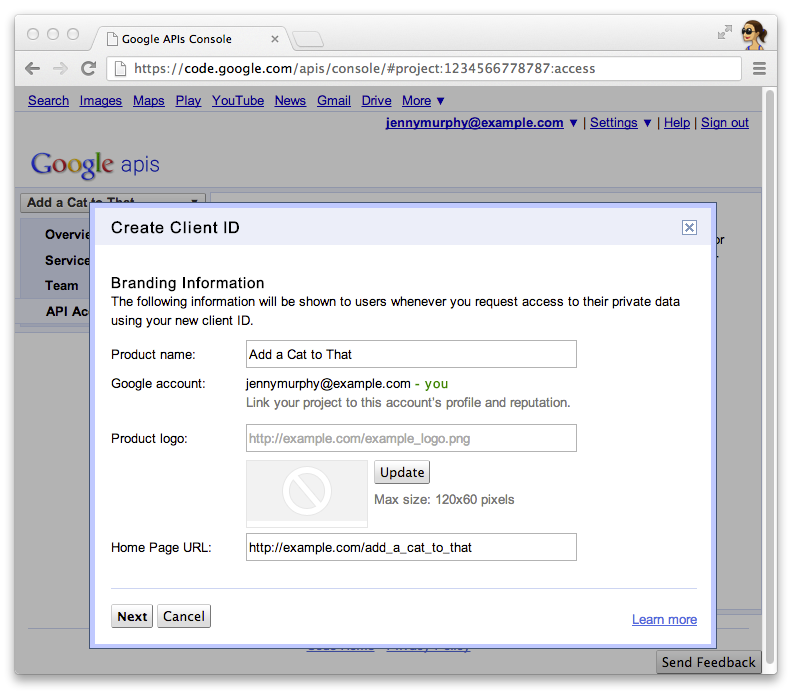
- Выберите веб-приложение и укажите любое значение имени хоста, например
localhost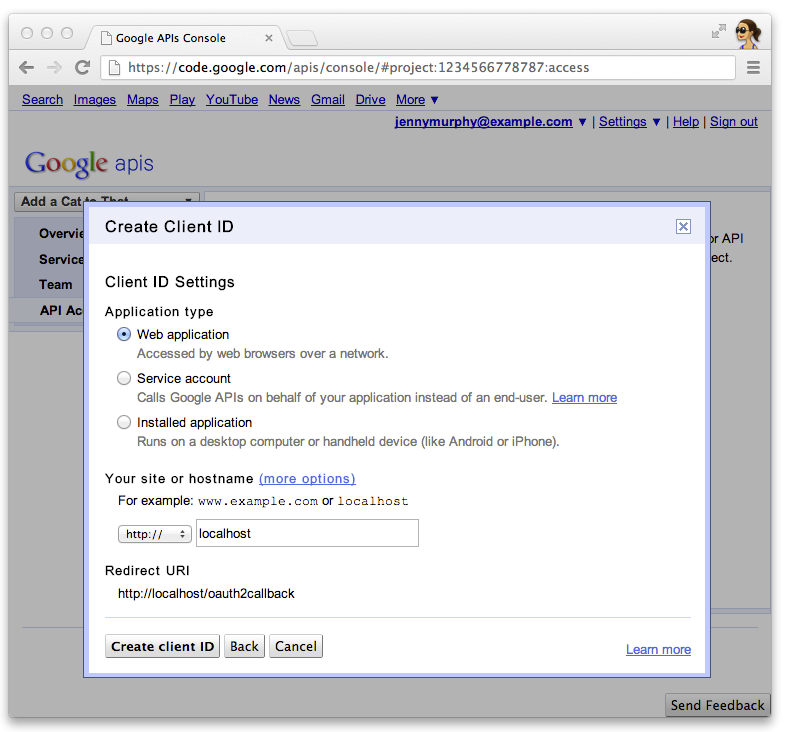
- Нажмите Изменить настройки... для идентификатора клиента, чтобы указать URI перенаправления. Укажите
http://localhost:8080/oauth2callbackи URL-адрес обратного вызова для вашего экземпляра App Engine, напримерhttps://myappengineinstance.appspot.com/oauth2callback.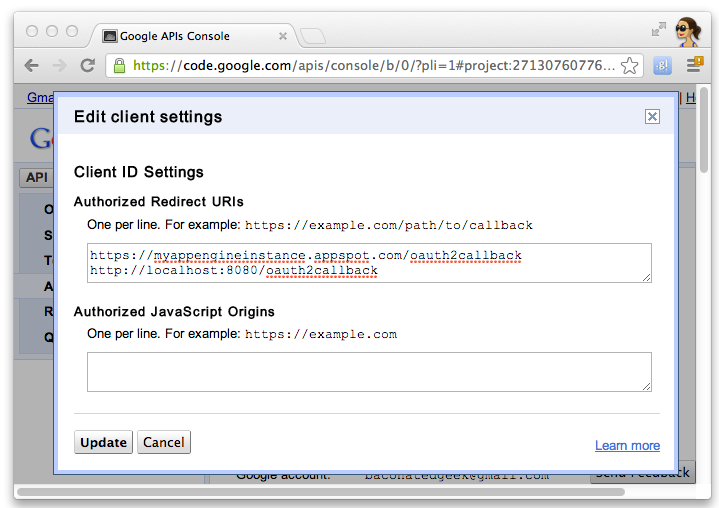
- Запишите идентификатор клиента и секретный ключ из консоли API Google. Он понадобится вам для настройки проекта быстрого запуска.
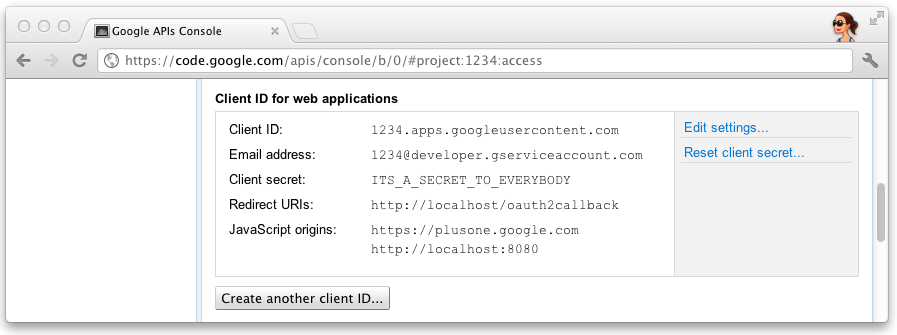
Настройка проекта
Настройте проект быстрого запуска для использования информации вашего клиента API:
- Введите свой идентификатор клиента и секрет в
client_secrets.json:{ "web": { "client_id": "1234.apps.googleusercontent.com", "client_secret": "ITS_A_SECRET_TO_EVERYBODY", "redirect_uris": [ ], "auth_uri": "https://accounts.google.com/o/oauth2/auth", "token_uri": "https://accounts.google.com/o/oauth2/token" } }
- Создайте файл
session.secretдля хранения файлов cookie сеанса:$ python -c "import os; print os.urandom(64)" > session.secret
- Отредактируйте
app.yaml, введя идентификатор приложения App Engine:application: your_app_engine_application_id version: 1 runtime: python27 api_version: 1 threadsafe: true ...
Развертывание проекта
Нажмите синюю кнопку «Развернуть» в графическом интерфейсе запуска App Engine или запустите следующую команду оболочки, чтобы развернуть код:
$ appcfg.py --oauth2 update .

